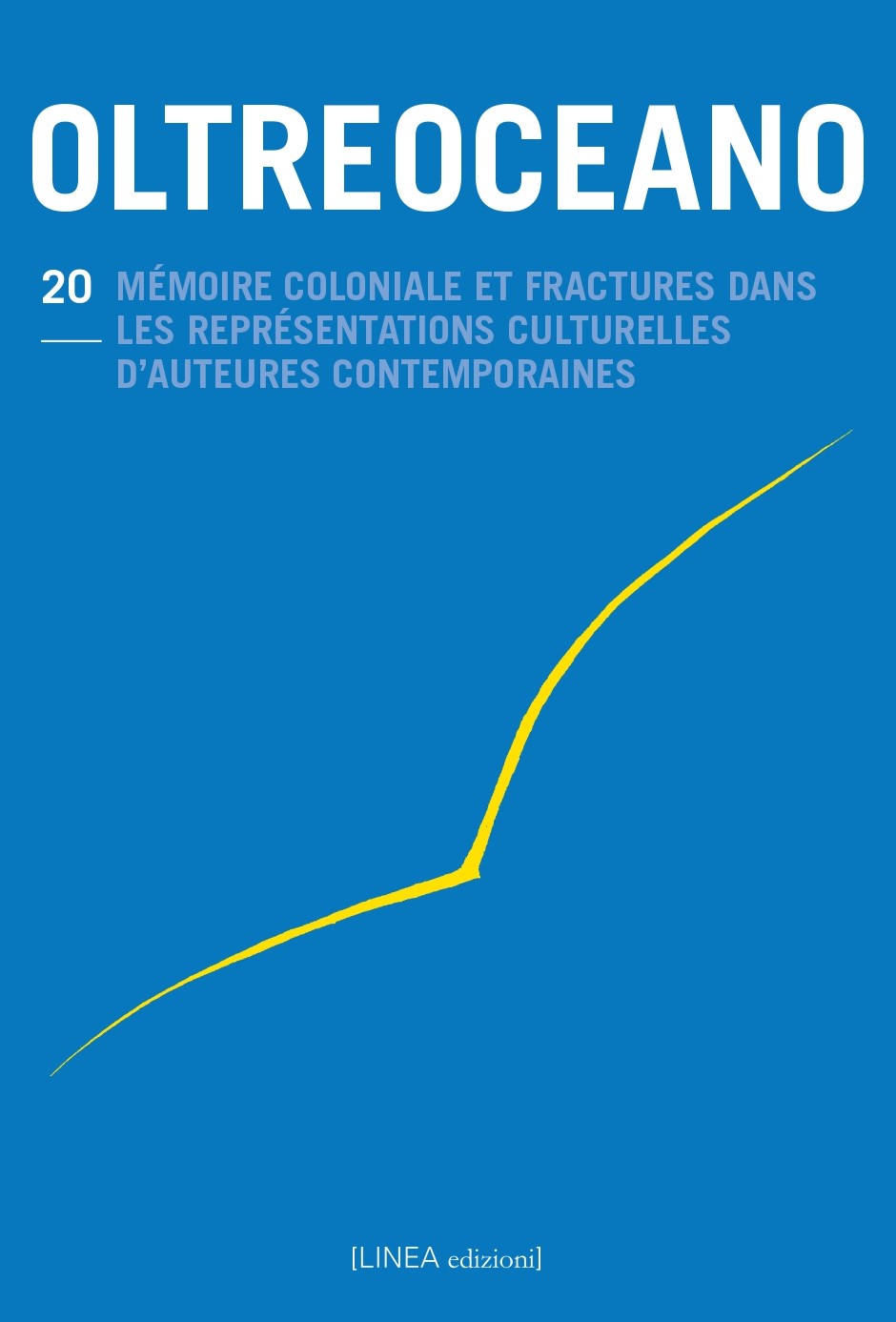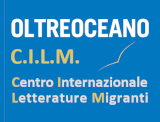Les traces visuelles d’une mémoire coloniale: la trilogie autobiographique de Colette Fellous
DOI:
https://doi.org/10.53154/Oltreoceano50Parole chiave:
autobiographie, Tunisie, photographieAbstract
L’écriture de Colette Fellous s’inscrit dans une perspective pluridisciplinaire, dont le meilleur exemple est sans doute offert par la trilogie composée de Avenue de France (2001), Aujourd’hui (2005) et Plein été (2007). Elle est consacrée à l’évocation d’un pan de l’histoire de son pays natal, la Tunisie. L’autrice opte pour une littérature perçue comme plus accueillante par l’insertion de documents visuels au sein de son œuvre, notamment la carte postale. Elle entremêle la mémoire collective à la mémoire individuelle en préconisant une perspective largement interdisciplinaire afin de donner à voir et à lire l’influence de la présence du colon français sur le vécu des Tunisiens de l’époque.
The Visual Traces of a Colonial Memory: Colette Fellous’ Autobiographical Trilogy
The writing of Colette Fellous belongs to a multidisciplinary perspective as it is best illustrated by her trilogy which consists of Avenue de France (2001), Aujourd’hui (2005) and Plein été (2007). This trilogy refers to a historical era related to her homeland, Tunisia. The author opts for a literature that can be perceived as a comprehensive one through the insertion of visual documents notably, the postal card. The writer intertwines the collective and individual memories together so that to indicate a largely interdisciplinary perspective. The aim behind this is to visualize and read about the impact of the French colonizer on the life of Tunisians in that era.
Le tracce visive di una memoria coloniale: la trilogia autobiografica di Colette Fellous
La scrittura di Colette Fellous si inserisce in una prospettiva multidisciplinare, il cui miglior esempio è forse la trilogia composta da Avenue de France (2001), Aujourd'hui (2005) e Plein été (2007), dedicata alla rievocazione di una parte della storia del suo paese natale, la Tunisia. L'autrice opta per una letteratura percepita come più accogliente inserendo nella sua opera documenti visivi, in particolare cartoline. Intreccia memoria collettiva e individuale, sostenendo una prospettiva ampiamente interdisciplinare per mostrare e leggere l'influenza della presenza coloniale francese sulla vita dei tunisini dell'epoca.
Downloads
Riferimenti bibliografici
Barthes, R. (1980): La Chambre claire, Note sur la photographie. Paris: Gallimard & Seuil.
Barthes, R. (2005): L’empire des signes. Paris: Seuil.
Bauret, G. (1992): Approches de la photographie. Paris: Armand Colin.
De Ceccatty, R. (2009, 1er semestre): Les moments littéraires. Revue de littérature, 21, pp. 15-38.
Dosse, F. & Goldenstein, C. (2013): Paul Ricœur: penser la mémoire. Paris: Seuil.
Fellous, C. (2001): Avenue de France. Paris: Gallimard. Folio.
Fellous, C. (2005): Aujourd’hui. Paris: Gallimard. Folio.
Foucault, M. (1984): Des espaces autres. Conférence au Cercle d’Études Architecturales, 14 mars 1967. Architecture, Mouvement, Continuité, 5, pp. 46-49.
Mégnin, M. (2005): Tunis 1900. Lehnert&Landrock Photographes. Paris: Méditerranée.
Nora, P. (2004): Les lieux de mémoire, La République, La Nation, La France, 1. Paris: Gallimard.
Downloads
Pubblicato
Come citare
Fascicolo
Sezione
Licenza

Questo lavoro è fornito con la licenza Creative Commons Attribuzione - Non commerciale - Condividi allo stesso modo 4.0 Internazionale.
Gli autori si impegnano a rispettare le seguenti condizioni, che s’intendono accettate al momento della sottomissione per la stampa dei propri contributi.
L’invio di un testo implica che esso sia inedito e non in attesa di essere pubblicato altrove.Gli autori si impegnano a rispettare le seguenti condizioni, che s’intendono accettate al momento della sottomissione per la stampa dei propri contributi.
- Qualora venga accettato, l’autore conferisce all’editore il diritto di pubblicarlo e distribuirlo sia in forma cartacea che nell’edizione elettronica in rete. Gli articoli pubblicati saranno scaricabili e resi disponibili in open access.
- Purché segnali correttamente che la prima pubblicazione è avvenuta sulla rivista «Oltreoceano. Rivista sulle migrazioni», l’autore ha facoltà di: a) riprodurre l’articolo in estratti separati o raccolti in volume; b) pubblicare l’articolo nel proprio sito personale o in quello di corsi di insegnamento purché si tratti di siti di natura non commerciale; c) depositare l’articolo in archivi online di carattere non commerciale, legati all’istituzione di appartenenza o come parte di progetti di diffusione non commerciale e open access dei lavori scientifici.
Non è consentita l’utilizzazione dei contributi da parte di terzi, per fini commerciali o comunque non autorizzati. L’editore declina ogni responsabilità sull’uso non autorizzato del materiale pubblicato sulla rivista.













